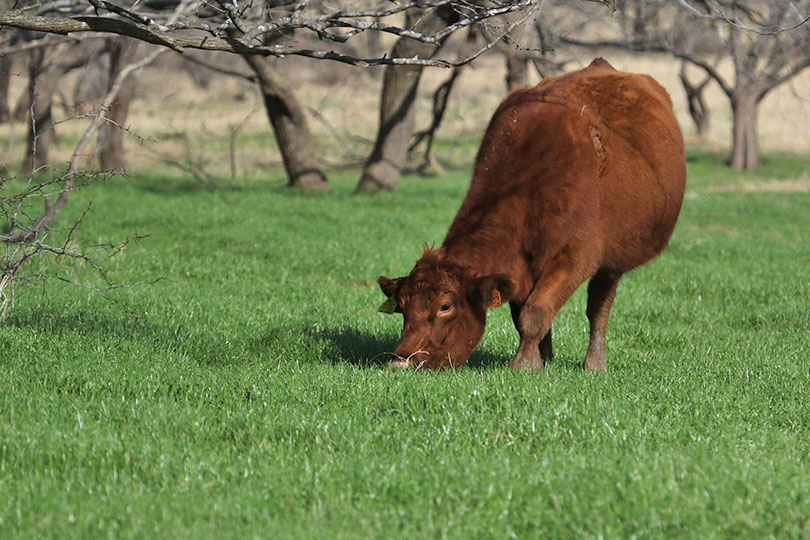By Shelby Shank
Field Editor
As the new year kicks off, rangeland and pastures across Texas have a fairly good outlook, but many areas could still use moisture, according to Tracy Tomascik, Texas Farm Bureau (TFB) associate director of Commodity and Regulatory Activities.
“Pastures and rangelands are in better shape than the past couple of years, but don’t get carried away,” he said in an interview with the Texas Farm Bureau Radio Network. “The drought monitor shows improvements, but we all know it takes time for grasslands and forages to recuperate, and the winter season is a good time for it to happen.”
The U.S. Department of Agriculture’s latest Crop Progress and Condition Report shows pasture and range conditions were rated poor to fair in Texas.
As of Jan. 2, less than 40% of the state is impacted by drought, according to data from the Texas Water Development Board (TWDB). Portions of the state—Far West Texas, South Central Texas and East Texas—continues to experience exceptional drought.
But El Niño weather patterns are finally kicking in, bringing mild temperatures and recent rainfall.
“These rains have really helped conditions level out. If El Niño conditions continue to persist, then hopefully we’ll get to a more normal weather pattern,” Tomascik said. “Heavier rains across the whole state would help replenish stock ponds, lakes and aquifers, and everyone would benefit.”
Because of ongoing drought conditions and winter weather, ranchers have turned to supplemental feeding their livestock.
“Producers are still pretty short on forages, but they’re being very strategic in how they are utilizing their supplies,” Tomascik said. “Luckily, prices have softened a bit for protein, and cool season grasses have greened up, providing additional winter forage for livestock. There’s been some relief there.”
The National Weather Service anticipates wetter conditions for East Texas in the coming months. However, drought conditions are expected to remain in Central and West Texas through the end of March.


Leave A Comment